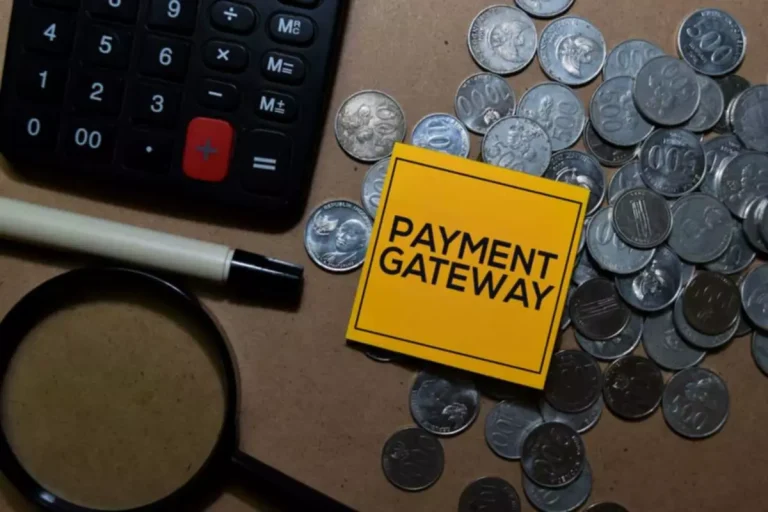This all means a coordinated attack could be very pricey for the attacker. A transaction has “finality” in distributed networks when it’s part of a block that can’t change with out a appreciable quantity of ETH getting burned. On proof-of-stake Ethereum, this is managed using “checkpoint” blocks. Validators vote for pairs of checkpoints that it considers to be valid. If a pair of checkpoints attracts votes representing a minimal of two-thirds of the whole staked ETH, the checkpoints are upgraded.
HETH can be freely traded on Uniswap and transferred, offering flexibility and liquidity to stakers. Validators should arrange a dedicated validator node, which includes operating Ethereum shopper software corresponding to Prysm, Lighthouse, or Teku. The node performs varied tasks, together with block validation, transaction verification, and consensus participation.
Will Mining Have An Result On Eth Price After The Upgrade?
Investors are betting the change might be vital for the price of ether, which has gained more than 50% for the rationale that finish of June, compared to a slight loss for bitcoin. If an attacker needs to revert a finalized block, they’d subsequently have to be prepared to lose at least one-third of all of the ETH that’s been staked. Ethereum’s mechanism has other drawbacks—it’s tediously sluggish, averaging 15 transactions per second. CryptoKitties, a recreation where gamers breed and trade cartoon cats, caused a transaction pileup on the network in 2017. These international locations need the power to keep their companies running and their homes heat.
Whereas beneath proof-of-work, the timing of blocks is set by the mining issue, in proof-of-stake, the tempo is fixed. Time in proof-of-stake Ethereum is split into slots (12 seconds) and epochs (32 slots). One validator is randomly selected to be a block proposer in every slot. This validator is responsible for creating a new block and sending it out to other nodes on the community. Also in each slot, a committee of validators is randomly chosen, whose votes are used to find out the validity of the block being proposed. Dividing the validator arrange into committees is essential for preserving the network load manageable.
Block Proposals And Validation
Every transaction on the Ethereum network is initiated through sensible contracts and is verified using the proof-of-work mechanism. Participants get access to immutable transaction data distributed securely throughout the community. If a single entity amassed the vast majority of ether staked to validate new transactions, they might alter the blockchain and steal tokens. Crypto specialists also say there is a risk that technical glitches might mar the Merge, and that scammers could benefit from confusion to steal tokens. A proof-of-stake community like Ethereum secures itself through staked cryptocurrency.
Only the miner who achieves this primary will verify the block and be rewarded. In this technique, power is the useful resource the network makes use of to safe itself. The huge amount of energy required to beat the blockchain’s consensus mechanism is a key deterrent for unhealthy actors.

Proof of stake network makes use of a validator node to verify transaction knowledge earlier than adding it as a block on the blockchain. But this duty creates an avenue for community members to use the network. That’s why the network penalizes validators by withholding rewards when they misbehave. With Proof of Work (PoW) consensus mechanisms, a brand new block can solely be added if the block hash is calculated through an incredibly advanced equation. It can take trillions of guesses before that value is randomly discovered by a miner.
Firstly, they validate transactions by verifying that they adhere to the community’s guidelines and consensus protocols. Validators make certain that transactions have legitimate signatures, the sender has enough funds, and the transaction does not violate predefined situations or smart contract guidelines. Another consensus mechanism is Proof-of-Space-Time (PoST), implemented by Chia Network. PoST leverages individuals’ unused hard drive area and measures the time it takes to create and retrieve proofs from that space. [newline]This mechanism promotes power effectivity and goals to be extra environmentally friendly than PoW. The advantages of PoS embrace reduced vitality consumption compared to PoW, as it eliminates the need for resource-intensive mining operations. PoS methods often present faster transaction affirmation instances and increased scalability, making them well-suited for networks with high transaction volumes.
What Goes To Occur To Ethereum Miners’ Fees After The Upgrade?
Many hope it can each rehabilitate the reputation of crypto for skeptics and improve the efficiency of Ethereum’s huge ecosystem of companies and builders. Google even created a countdown clock featuring white and black bears, a nod to a meme about the event. While Ethereum builders say the “proof-of-stake” mannequin has safeguards to keep off hackers, others say criminals might assault the blockchain underneath the new system.

Based on the proposal, the Proof of Work protocols might be transitioned into The Beacon Chain to turn into proof of stake. Also, those who stake ETH on the network will receive block rewards and part of the transaction charges. But the charges burned due to EIP-1559 might be shared equally to the stakers swimming pools, despite the very fact that the Beacon Chain didn’t choose them. Also, if validators seem dishonest, exhibiting sure behaviors such as submitting contradicting attestations or proposing many blocks in one slot, the community destroys their stakes. A few of the cryptocurrencies already using the proof of stake consensus mechanism include Cardano (ADA), Solana (SOL), Tron (TRX), EOS, Cosmos (ATOM), Tezos (XTC), and Terra.
The major objective in phase 1 is to split the Ethereum blockchain into 64 shard chains. Proof of work comes with huge computing energy and adequate mining hardware requirement for energy-intensive validation. But the proof of stake solely requires a particular amount of cash locked on the community. The proof-of-work and proof-of-stake consensus mechanisms validate transactions on a crypto community.
- However, there are plans to move to the proof of stake (PoS) system quickly.
- The Beacon Chain will select a group of validators each 12 seconds to designate roles.
- PoS techniques typically provide sooner transaction affirmation instances and increased scalability, making them well-suited for networks with high transaction volumes.
- Recognizing the necessity for scalability and energy effectivity, Ethereum launched into a multi-phase improve known as Ethereum 2.zero, with the key element being the transition from PoW to PoS consensus.
- For instance, they can revenue by inserting their transactions into arbitrage opportunities or by facilitating complex trades that generate profits.
- Sharding splits the network’s infrastructure into multiple interconnected items to support larger transactions.
Transactions like credit card funds can now be accomplished totally by way of Ethereum, and the phrase “it’s blockchain so be patient” doesn’t actually have to be used anymore. What’s extra, something that requires tokenization, corresponding to a logistics business or health-care project, can now faucet into cheaper methods to run decentralized applications (aka DApps). Miners are more profitable when they can carry out calculations faster, incentivizing investment in hardware and power consumption. This was noticed for Ethereum earlier than it switched to proof-of-stake. Shortly earlier than the transition to proof-of-stake, Ethereum was consuming roughly 78 TWh/yr – as much as a small nation.
Developers
Peercoin launched the idea of “coin age,” where the likelihood of being chosen as a validator is proportional to the product of the variety of cash held and the duration they have been held. This approach incentivized validators to carry their cash longer, promoting community stability and discouraging malicious conduct. The other profit https://www.xcritical.com/ touted is that PoS is healthier for implementing new scaling solutions in comparability with the proof of work architecture. Proof-of-stake Ethereum pays for its security by issuing far fewer cash than proof-of-work Ethereum as a result of validators do not have to pay high electrical energy prices.
For a brief interval that follows, a transaction could also be susceptible to assaults from dangerous actors who try to exploit weak factors within the blockchain. Finality is the time it takes to guard a transaction on the blockchain. Finality ensures that a selected block within the blockchain cannot be modified or reversed. The validator choice in Ethereum’s Proof of Stake (PoS) system relies on a validator’s stake within the network. To clarify, the greater the stake, the more probably that node will be chosen to add the model new block to the chain. Thousands of existing good contracts operate on the Ethereum chain, with billions of dollars in property at stake.
Validators attest to the validity of the proposed block by offering their digital signatures. This consensus verification course of entails confirming that the block has been proposed by a legitimate validator and that the proposed block follows the consensus guidelines. They confirm that every transaction has a legitimate signature, the sender has adequate funds, and doesn’t violate predefined circumstances or smart contract rules. Validators also engage in attestation, which entails testifying to the validity of proposed blocks. They provide their digital signatures to verify that a proposed block is valid and can be added to the blockchain. The first functioning use of PoS for cryptocurrency could be traced back to Peercoin, which launched in 2012.

But they achieve this in numerous ways and have varying levels of safety and reliability. Slashing is a disciplinary system utilized by PoS protocols to penalize validators for any dangerous how ethereum proof of stake works or irresponsible behaviors. This often entails the community deducting some of their security deposit (their preliminary staked coins).
In the “proof-of-stake” system, ether owners will lock up set quantities of their cash to examine new records on the blockchain, incomes new coins on high of their “staked” crypto. The Ethereum blockchain is because of merge with a separate blockchain, radically changing the method in which it processes transactions and how new ether tokens are created. Both PoW and PoS are kinds of consensus mechanisms that allow cryptocurrency networks to function with no central governing authority.
